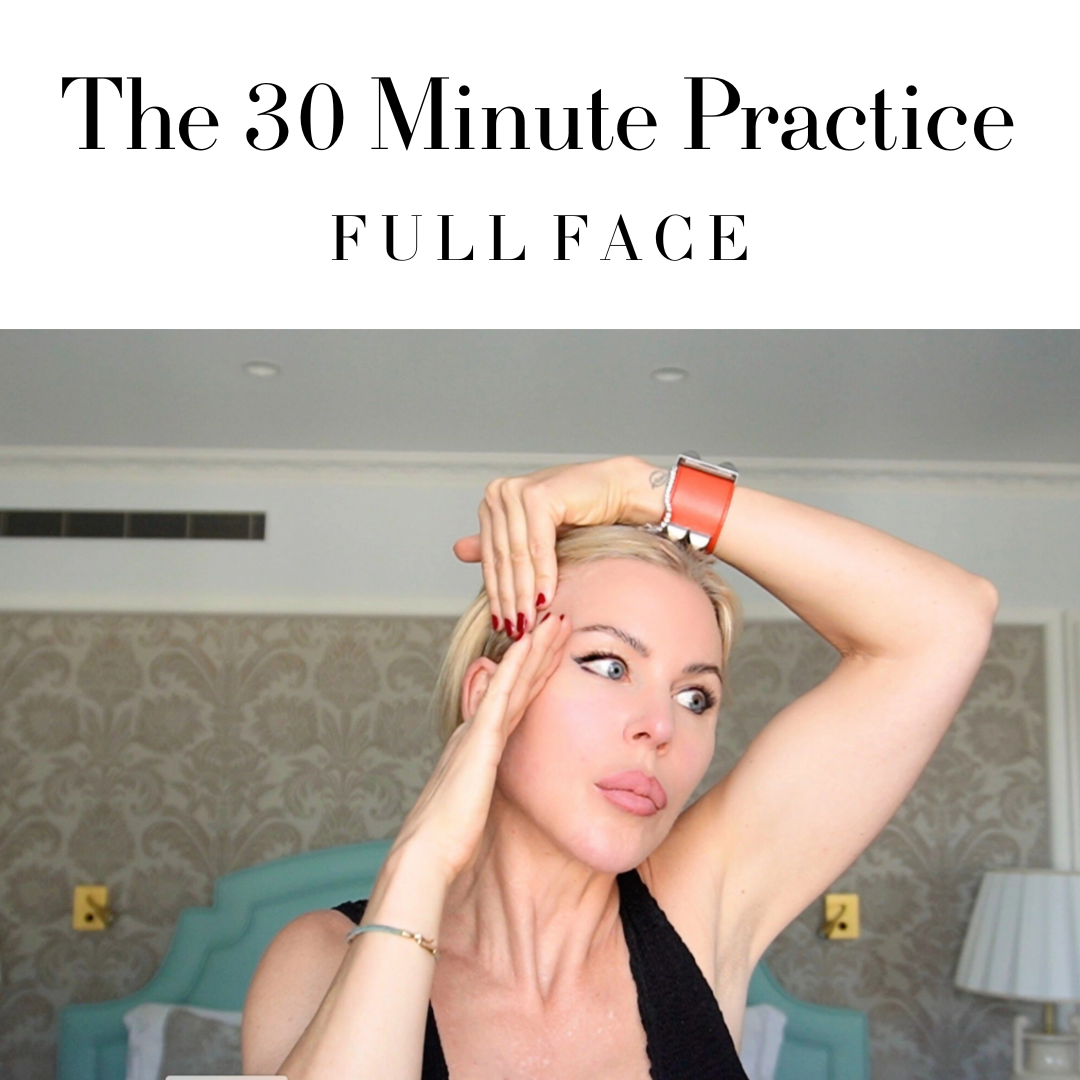
The 15 Minute Practice - FULL FACE
Your scalp covers almost half of your head, yet it's one of the most overlooked areas in facial care. What happens here directly shapes your face. A tight, immobile scalp can weigh down your features—making brows feel heavier, eyelids droopier, and forehead lines deeper. A free and flexible scalp, on the other hand, helps lift, open, and rejuvenate the upper face.
about
Beneath your hair lies a complex system of muscles, fascia, and connective tissue. At its center is the epicranial aponeurosis (also known as the galea aponeurotica)—a tendon-like sheet linking the back of your head (occipitalis) with the front (frontalis). Over time, stress, poor posture, and repetitive tension make this tissue lose its natural glide, creating what we call the “helmet effect.” Circulation slows, fascia stiffens, and the entire upper face starts to show it.
Key areas Include
- Scalp massage along the hairline to release tension and free the fascia
- Occipital release (back of the head) to counter pulling forces that drag the forehead downward
- Temple work to soften the temporalis muscle and lighten the brow area
- Epicranial aponeurosis mobilization — gentle techniques to restore glide in this central tendon-like sheet that links the front and back of the scalp
what will I learn in this video tutorial?
When scalp tissue sticks to the skull, it functions like a tight cap, dragging everything attached to it forward and down.
- The occipitalis pulls the forehead and brows downward, deepening lines.
- The temporalis tightens around the temples, adding heaviness above the eyes.
- Reduced blood and lymph flow in this area makes the face appear puffier and more tired.
The result? A tired, heavy look in the upper third of the face—even if the rest of you feels vibrant. Restoring scalp mobility reawakens circulation, relaxes overworked muscles, and lets your face return to its natural lift.